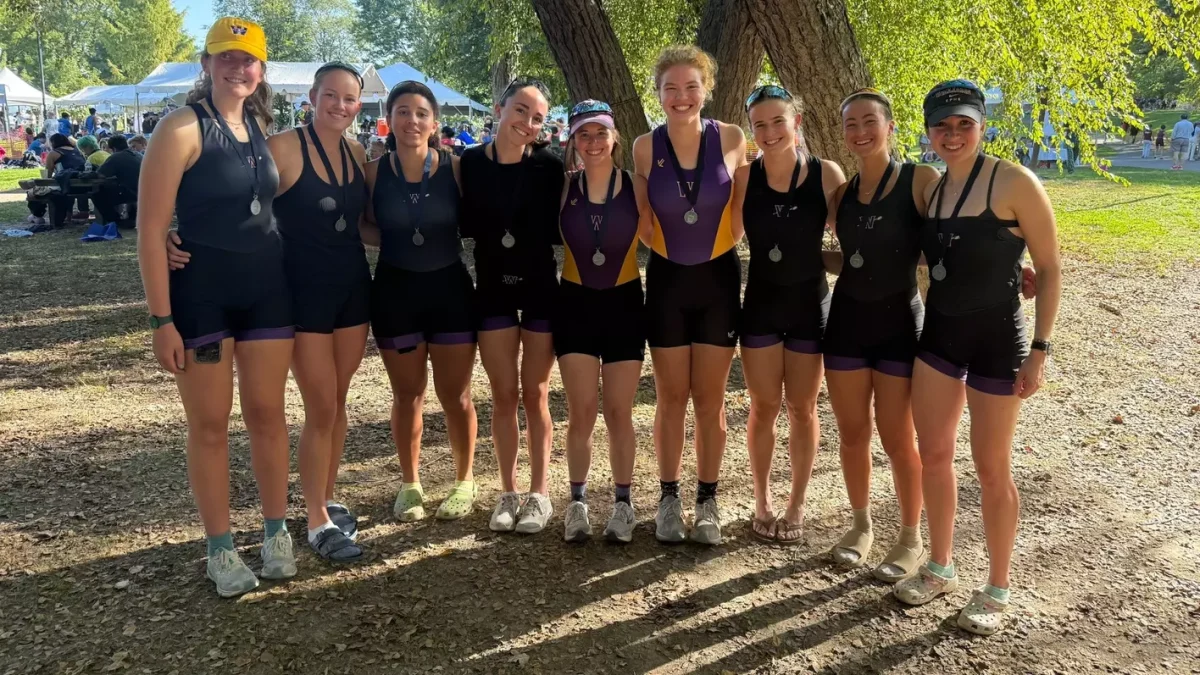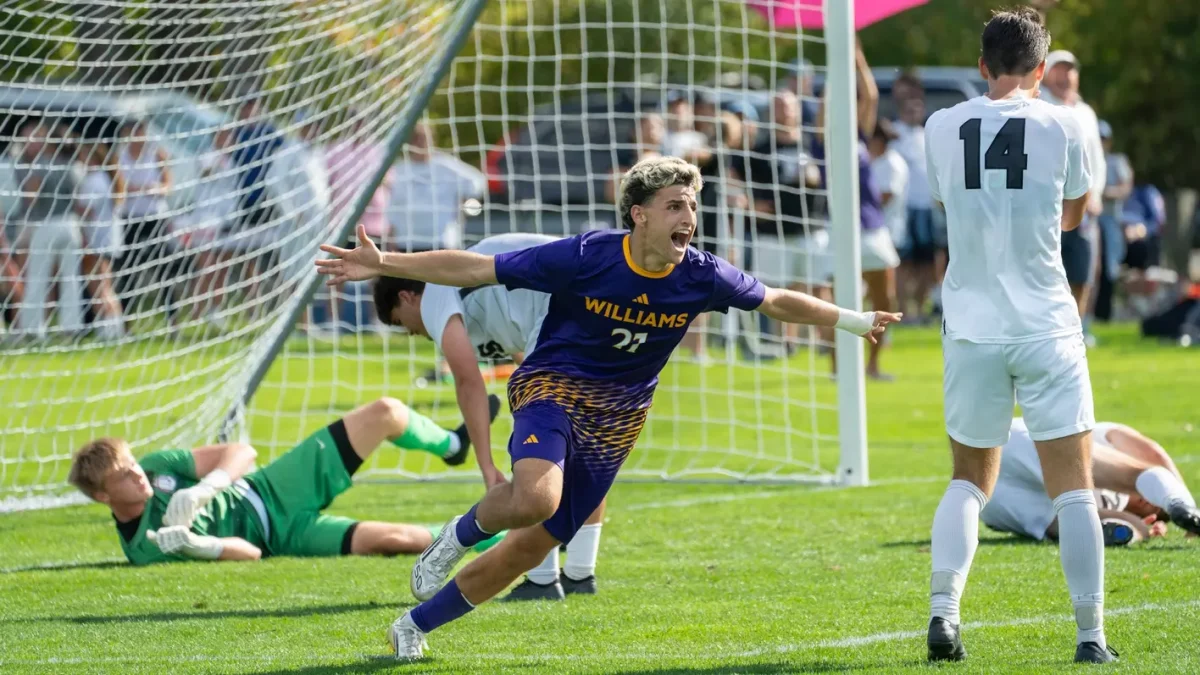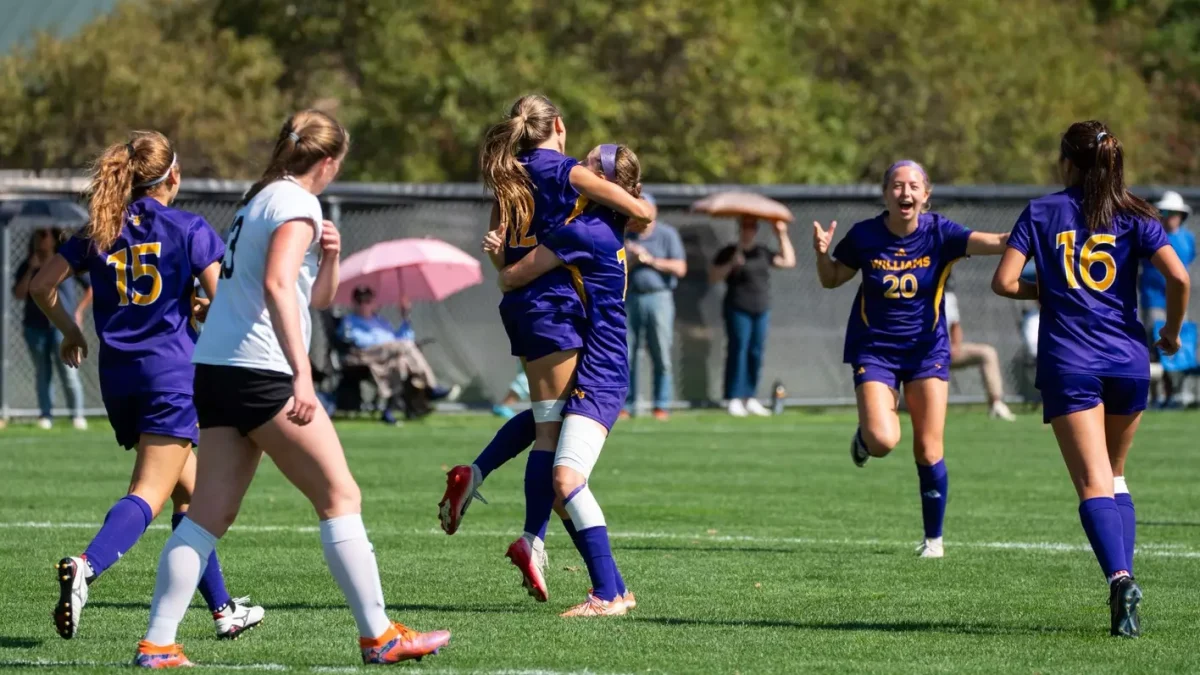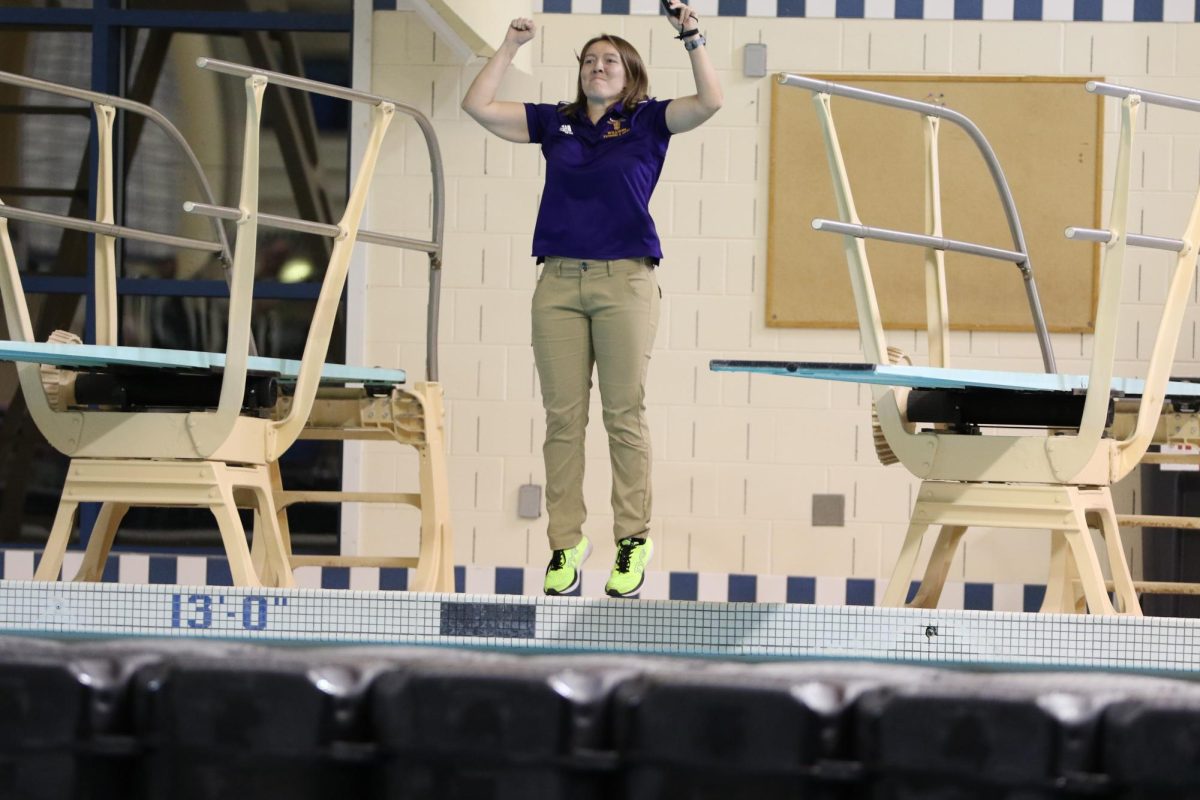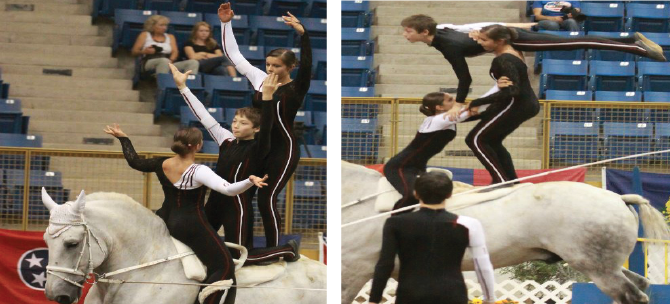
When Peter Matsumoto ’20.5 was in the third grade, he began a journey that many of us can only dream of. While many third graders were lining up eagerly for gymnastics and others were happily hopping on horses for equestrian lessons, Matsumoto was doing both. While gymnastics on a moving horse may sound like a fantasy, to Matsumoto, — a 2011 national champion in the sport — and the rest of his teammates at Valley View Vaulters, it was a regular part of life.
“Technically it’s not called horse gymnastics, or gymnastics on a horse, or anything like that,” he clarified. “It’s called equestrian vaulting.” The sport was introduced to the West Coast of the U.S., concentrated in Matsumoto’s native California, in the 1950s and ’60s, and despite recent expansions eastward it remains relatively niche.
Equestrian vaulting competitions have two main categories. The first is the compulsories. “It’s a set of moves that everyone does,” Matsumoto said, ranging from a simple sit to a more demanding “reverse scissors,” in which the vaulter does a backwards-facing handstand and kicks their legs back and forth. The specially trained horse moves in a circle the entire time, either at a walk, trot or canter. Novice and experienced vaulters are divided by their horses’ pace and by skill classes, but the core moves remain the same for all.
The second category, the freestyle, is when a vaulter’s unique skills get a chance to shine. Vaulters perform a set routine, usually to music, showing off both their physical skill and their charisma. Matsumoto’s older brother, for example, had a special move called “surfing the horse.”
“He’d basically put his front foot between the horse’s ears, and his back foot at the base of its neck,” he said, “and surf the horse.”
Matsumoto’s specialty was a Matrix-inspired backbend. “My music was from The Matrix, so I did the thing where Neo leans back and dodges bullets, but on a horse,” he said “It was crazy, it was a good time.” Another teammate of his would do a backflip on the horse, landing firmly on its back as it continued to run.
Although it may sound a little insane, there surprisingly have been very few vaulting-related injuries. “There has only been one incredibly serious injury in the history of American vaulting, where one woman fell off the horse and hit the fence right on her back,” Matsumoto said. “She’s paralyzed from the waist down now, but she still vaults. She’s a coach.”
Matsumoto first became involved in vaulting after seeing his brother do it, and his brother got into it at the behest of his therapist. “My brother, when he was a kid, had pretty severe ADHD,” he said. “And so as a treatment for ADHD my brother’s therapist said, ‘Why don’t you try this thing that I heard about.’”
In fact, Matsumoto’s coach, Rick Hawthorne, specializes in teaching vaulting as a form of therapy. Matsumoto described many teammates who made amazing strides, both physical and mental, as a result of the sport. “There’s one kid who had an intense neurological condition, and he’s had to have 15/16ths of his brain removed,” he said. “So he has basically enough left for walking, breathing, eating — basic functions. But he goes to vaulting every week and his cognitive ability has been improving. Because he keeps vaulting, he has this one thing to focus on.”
He also recalled another teammate who had severe cerebral palsy and used a wheelchair. His doctors had claimed he would never be able to walk, but Hawthorne could still get him on a horse. He would ride every day, until eventually he could execute some of the basic vaulting moves. “Then one day at a competition, they called his name … and he stood up, on his own, and walked to the podium, and everyone at the competition just burst into tears,” Matsumoto said. “This was a kid who was never supposed to leave his wheelchair, couldn’t even crawl and all of a sudden he’s walking. And now, he’s running, he likes to play soccer, he likes to vault. It’s like a miraculous recovery, because of the therapy of vaulting.”
What makes vaulting so therapeutic? While part of it is definitely just the physical exercise, Matsumoto also chalks a big part of it up to the special relationship between vaulter and horse. “Horses are kind of like magical animals. They’re these massive giants, and they’re the most gentle animals ever. And they somehow know who’s on their back,” he said. When it comes to vaulters with disabilities, “the horses understand that they’re not neurotypical, and if they need to stop walking, they stop walking. There’s a give and take there.”
Although he no longer practices the sport, Matsumoto looks back fondly on his time as a vaulter. He was inspired by his teammate’s moving stories, and challenged to always be his best. “I personally don’t have an amazing work ethic,” he said. “I’m a pretty big procrastinator. But when I start something, I see it through to the end, and that I got from vaulting.” That dedication, plus his national champion title, will stay with him for life.





